What Vegetables to Plant for Fall and When to Plant Them
Extend your growing season with crops that hit their peak as temperatures drop

In my northern garden, the arrival of autumn doesn’t signal an end to the growing season. Instead, it’s a shift from the heat-loving vegetables of summer to the cool- and cold-season crops of fall and winter. I see autumn as a second season in which our garden beds, cold frames, and poly tunnels can be filled with a wide variety of root crops, leafy greens, and flavorful herbs.
The trick is to know when—and how—to plan for an autumn harvest. The when is easy to figure out. Take the “days to maturity” listed on the seed packet, and count backward from your first expected fall frost date. That’s when fall crops should go into the ground. As for the how, there are two main ways to plant: direct sowing and starting seeds indoors to be transplanted into garden beds or into a cold frame. My general rule is that root crops and fast-growing greens are direct seeded, while slower greens and stem crops are transplanted. Transplanting is a sneaky way to get past the hot weather, dry soil, and summer pests, which can make it difficult to establish fall-harvested vegetables. Using grow lights, you can start an abundance of healthy seedlings to be plugged into garden beds at the right time.
Best leafy greens
Autumn is prime time for leafy greens such as spinach, Swiss chard, mizuna, and kale. Most are sown in mid to late summer, depending on the crop. Tuck these greens into the veggie garden, mix them into your ornamental beds, or plant them in containers.
Asian greens

Asian greens such as mustard, mizuna, tatsoi, and loose-leaf Chinese cabbages pair quick growth with excellent cold tolerance. Most are ready to harvest as baby greens just three to four weeks from seeding, with a mature crop ready in six to seven weeks. Sow a variety of Asian greens for weeks of colorful gourmet salads.
Kale and collards
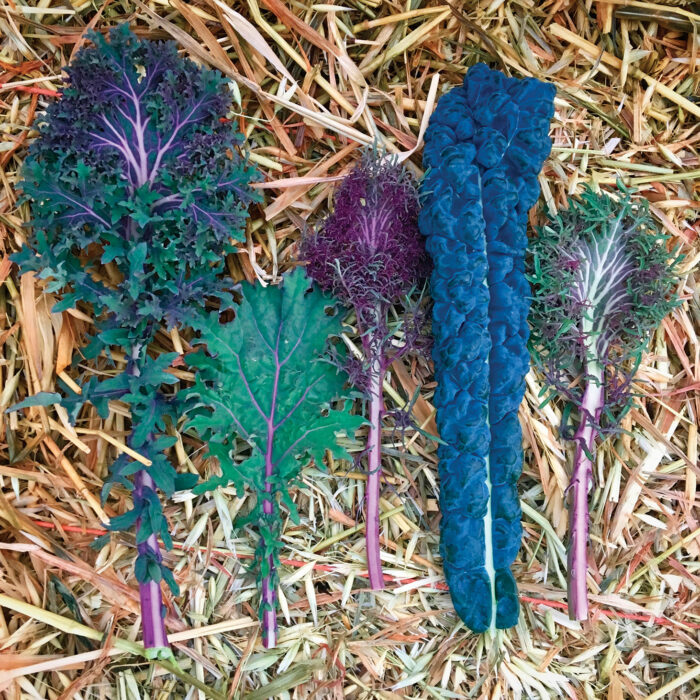
Kale and collards are easy to grow, nutritious, and perfect for mixing with ornamentals in fall planters or garden beds. Plus, kale is ridiculously cold tolerant, with its flavor improving after several hard frosts. For mature kale, sow seeds two months before the first fall frost. Baby kale can be sown thickly in beds four to five weeks before the first frost. Collards are slower growing and need to be seeded 12 to 14 weeks before the frost date.
Spinach
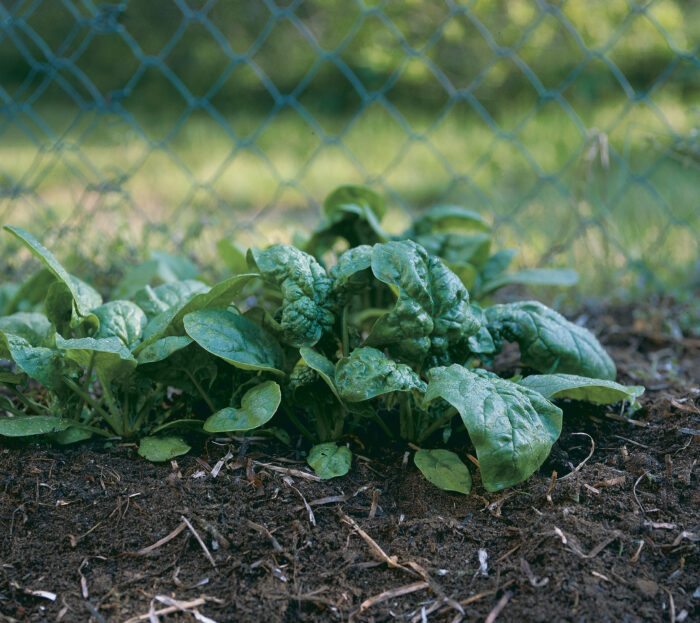
Tender spinach is at its best in autumn, when shrinking days and cool temperatures mean a long season of harvest. Direct sow in garden beds six to eight weeks before the fall frost date or four weeks before in a cold frame. When ordering seed, keep in mind that savoy and semi-savoy varieties tend to be more cold tolerant.
Swiss chard

A dazzling ornamental edible with deep green leaves and bright pink, red, gold, orange, or white stems, Swiss chard is an ideal choice for fall garden beds or containers. Harvest as a baby green just a month from sowing, or wait two months for the plants to reach maturity. With hot pink and white striped stems, Peppermint is my go-to chard for autumn color.
Cabbage
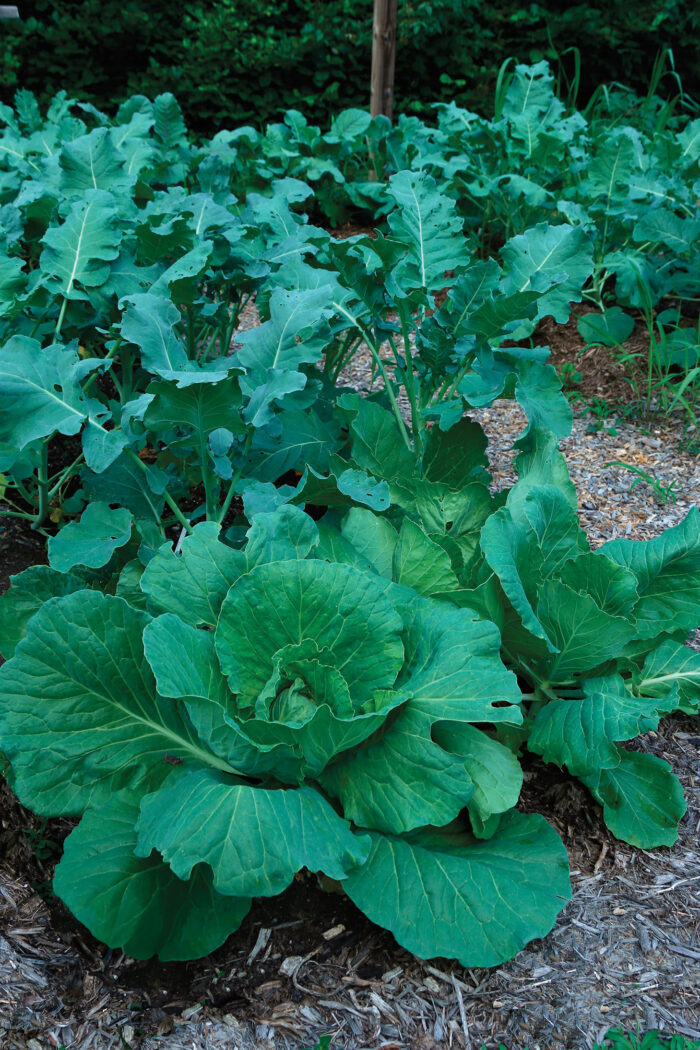
Because cabbage grows best with a steady supply of water and nutrients, I dig in plenty of compost before planting. Sow seeds directly in the garden 12 to 14 weeks before the first fall frost, or start them indoors and move the seedlings to the garden 10 weeks before the frost date. Water consistently, and drape lightweight row covers over the plants to dissuade cabbage worms.
Growing tip: Water and shade help summer-planted crops thrive
It’s important to stay on top of watering for summer-seeded or transplanted vegetables. Be sure to keep the soil consistently moist until the plants are growing well. To conserve water, drape a length of shade cloth on hoops over the bed. This slows water evaporation, boosting germination and reducing transplant stress. Leave the shade cloth in place for one to two weeks.
Best root crops
For many root vegetables, the cooling temperatures of autumn signal a flavor change, as enzymes break down starches and turn them into sugars. Beets, carrots, parsnips, celeriac, and turnips all taste better after several frosts, so don’t rush to harvest if a frost is in the forecast.
Carrots

Late autumn carrots are often called “candy carrots” for their supersweet roots. Sow seed for fall carrots in midsummer, about 10 to 12 weeks before the first fall frost, depending on the variety. Keep the soil consistently moist until the seeds germinate and are growing well.
Beets
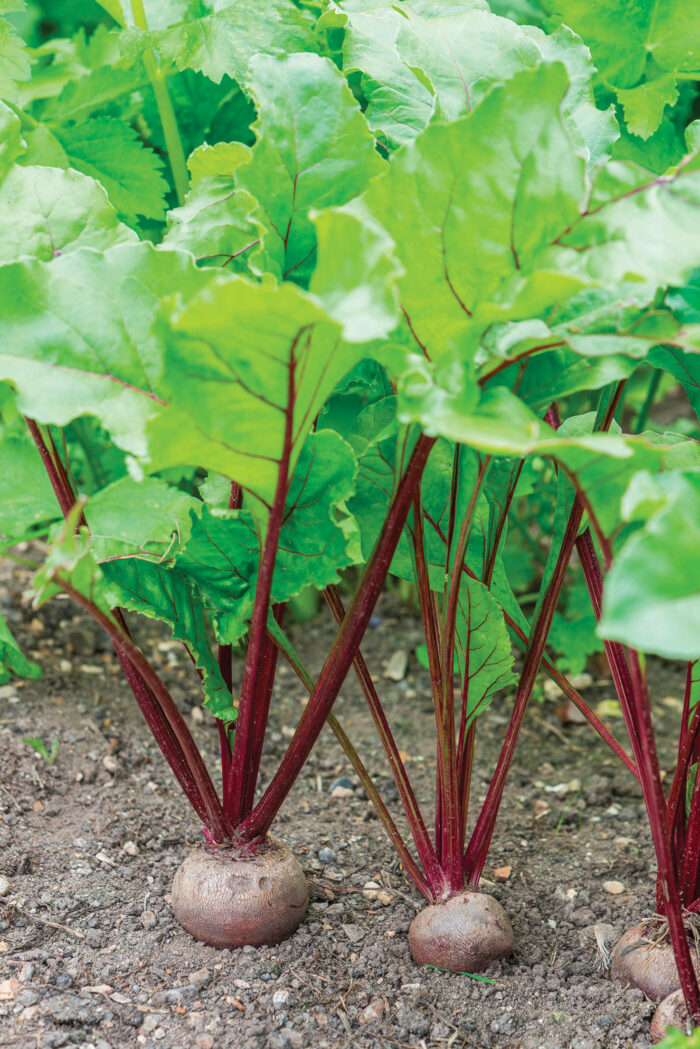
For a fall crop of sweet, earthy beets, direct sow about eight weeks before the first expected fall frost. The harvest starts 55 to 60 days after sowing. Prolong the harvest in late autumn by covering beets with a row cover or an insulating layer of straw.
Winter radishes
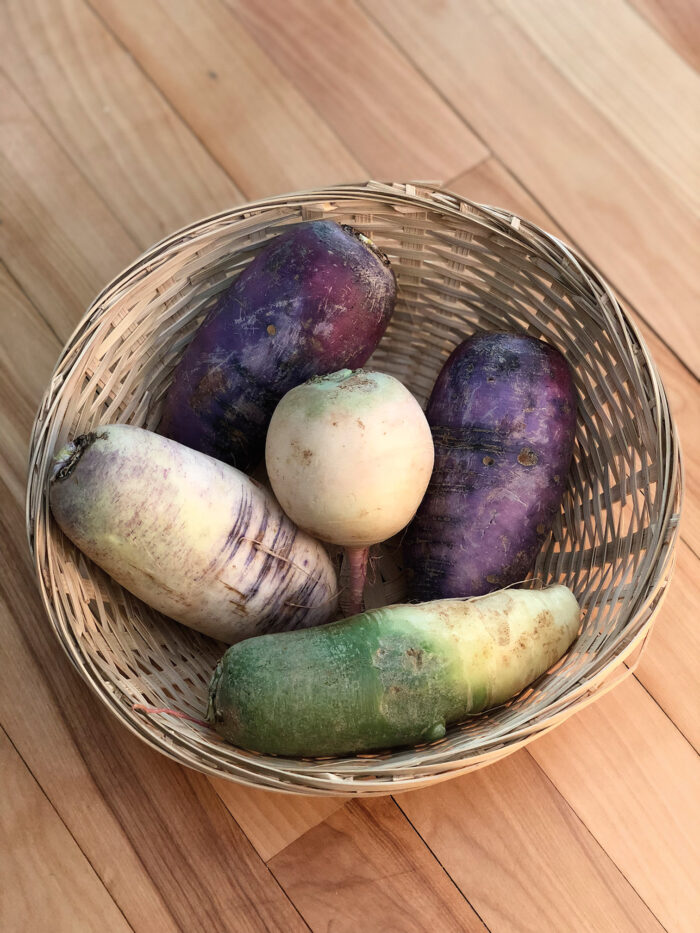
Perhaps the most underappreciated autumn crop, winter radishes offer a bold selection of root colors, shapes, and flavors. Most varieties need eight to 10 weeks to go from seed to harvest and can be left in the garden and mulched for winter meals. Try mild-flavored Watermelon, or if you’re a lover of spicy foods, Black Spanish packs a punch!
Other crops
When planning an autumn harvest, read seed catalogs carefully, and opt for vegetables that grow best in cool weather. Don’t be shy about trying unfamiliar crops such as kohlrabi or bulb fennel, which are easy to grow and delicious.
Winter squash

Winter squash is perhaps the most celebrated vegetable of autumn, with fruits in an assortment of sizes, colors, and shapes. Most types need a long season to mature and are planted in late spring, after the last spring frost. Many new hybrids offer improved resistance to common diseases such as powdery mildew.
Kohlrabi
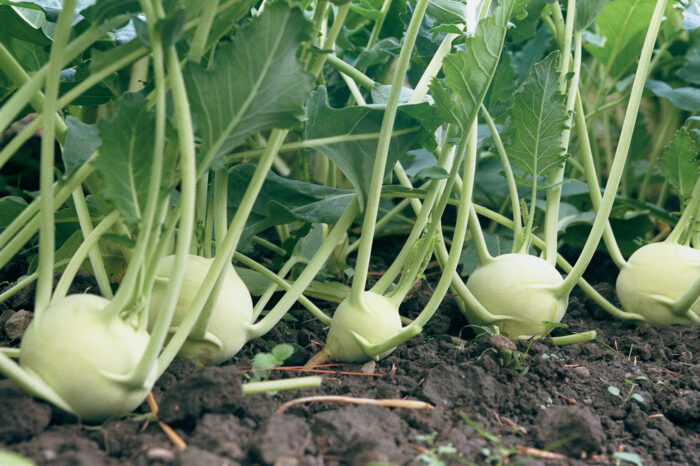
Kohlrabi is a cabbage-family vegetable that offers two edible parts: the purple or green rounded stems and the tender leaves. Direct sow kohlrabi seeds 10 to 12 weeks before the first fall frost, or start them indoors and move them to the garden three to four weeks later.
Scallions
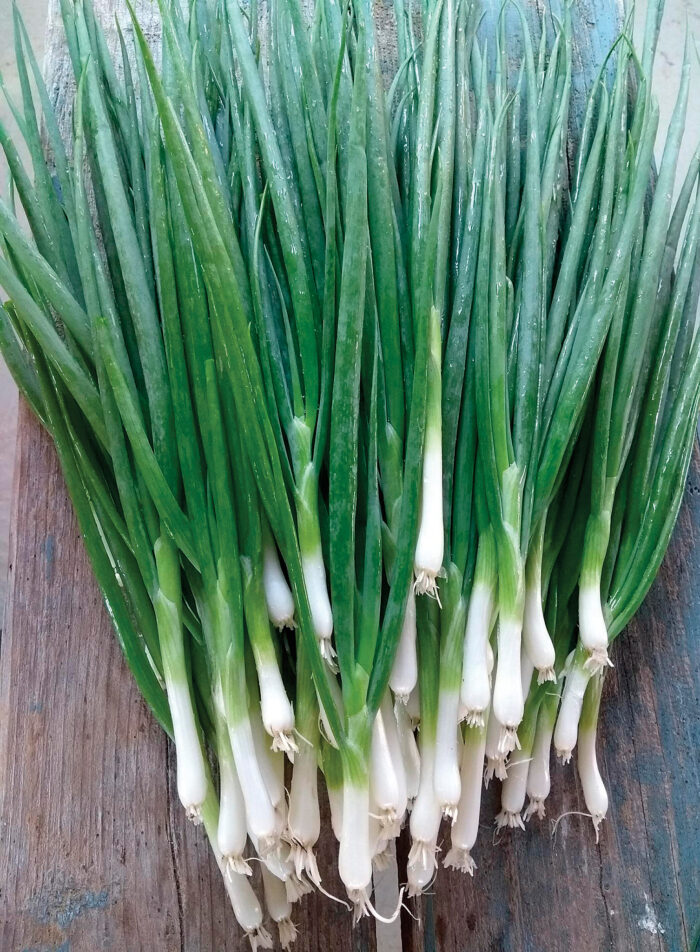
Direct seed a 3-inch-wide band of scallion seeds eight to 10 weeks before the fall frost. Try to space seeds a quarter of an inch apart, thinning to half an inch as they grow. (You can eat the thinnings.) For the longest harvest, succession plant every three weeks from early spring through late summer.
Bulb fennel
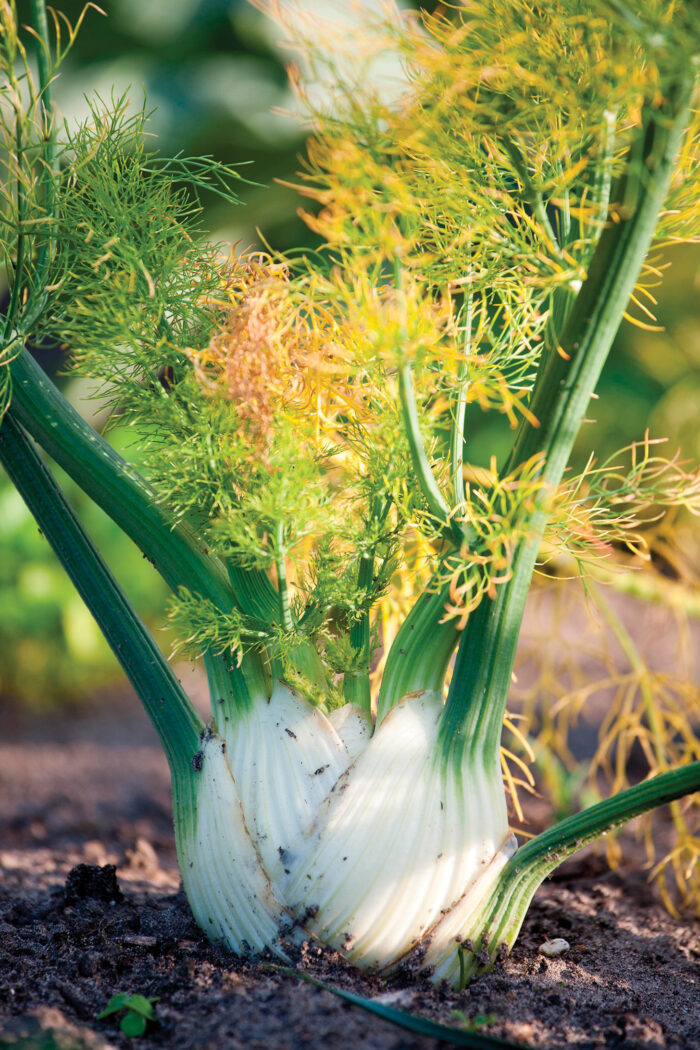
Beautiful and aromatic, bulb fennel is a highlight of my autumn garden. It offers several edible parts, including anise-flavored bulbous stems and fine-textured foliage. For a fall crop, start seeds indoors 12 to 14 weeks before the first expected fall frost. Transplant seedlings into the garden once they’re a month old, being careful not to disturb the roots.
Parsley
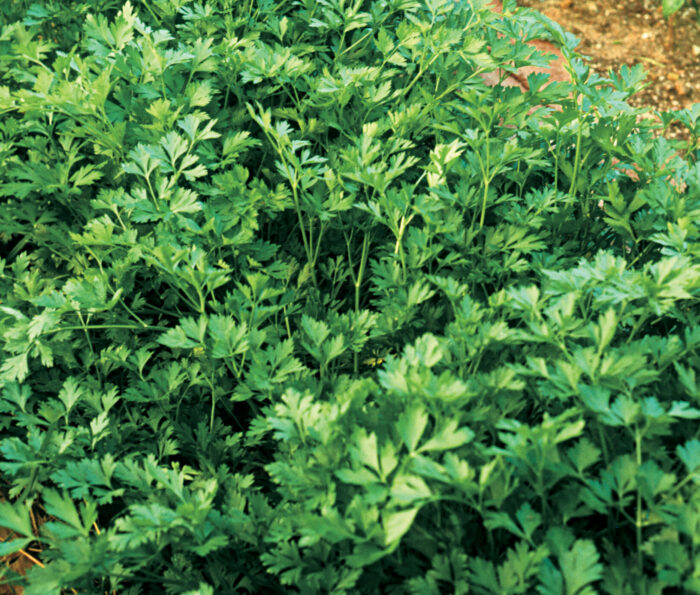
The bright, fresh flavor of parsley has made it one of the most popular culinary herbs to eat. Fortunately, it’s easy to grow in pots and gardens. Because spring-planted parsley can bolt when summer is long and hot, start more seeds indoors in early summer, moving them to the garden by midsummer.
BASICS
Four season extenders to stretch your autumn harvest
Growing fall crops is even easier with a little protection. Here are four ways to keep crops growing as the days get colder.
Mini hoop tunnels
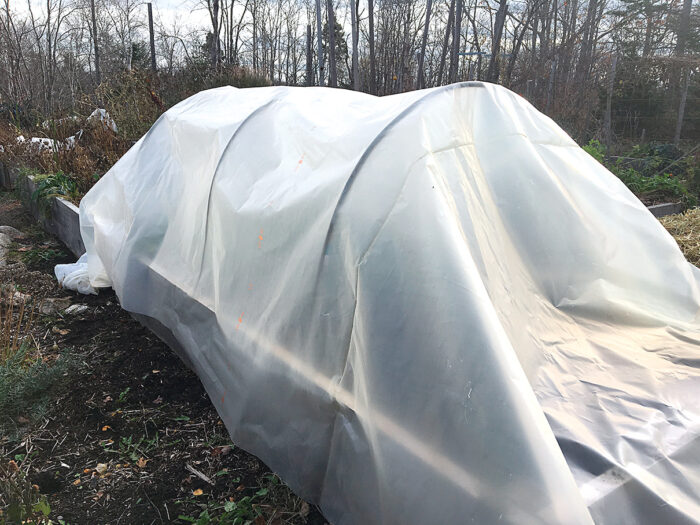
The hoops of my tunnels are made from ½-inch PVC or ½-inch metal conduit. I cover these hoops with row cover fabric or polyethylene film, depending on the season.
Row covers

A row cover is a lightweight, semi-transparent fabric that is laid directly on plants or floated overtop on hoops. These are the first line of defense for frost, with light and medium-weight row covers offering about 4°F of frost protection.
Cold frames
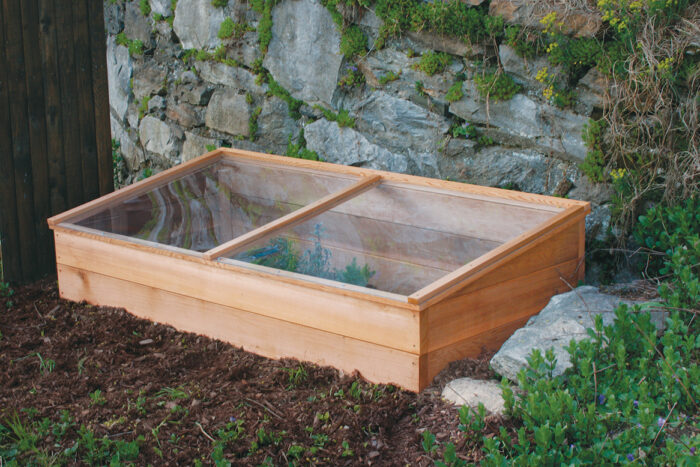
My cold frames are year-round food factories that shelter cold-season root crops and greens during autumn and winter. A cold frame is a bottomless box with a clear top. It captures solar energy and creates a microclimate around the vegetables inside.
Cloches
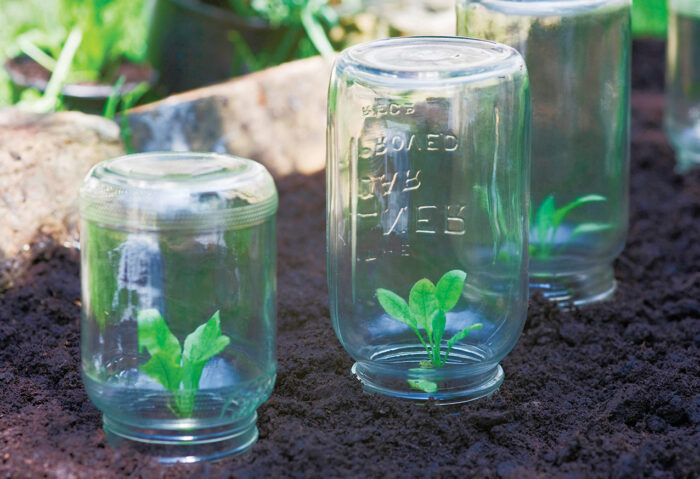
A cloche is a mini greenhouse that is popped over a plant in spring or autumn to protect it from inclement weather. You can buy glass or plastic cloches, but you can also upcycle milk jugs, water bottles, or glass jars into effective cloches.
Niki Jabbour is the author of Niki Jabbour’s Veggie Garden Remix, The Year-Round Vegetable Gardener, and Groundbreaking Food Gardens.
Fine Gardening Recommended Products

Fort Vee - Organic Potting Soil Mix
Fine Gardening receives a commission for items purchased through links on this site, including Amazon Associates and other affiliate advertising programs.

Corona® Multi-Purpose Metal Mini Garden Shovel
Fine Gardening receives a commission for items purchased through links on this site, including Amazon Associates and other affiliate advertising programs.






Comments
What a terrific variety of plants for the fall veggie garden! I wish I'd set aside carrot seeds to plant now. It's impossible to find them in the shops in my area, and I won't get them in time by post. Looking at next year, I guess. Thanks!
Log in or create an account to post a comment.
Sign up Log in